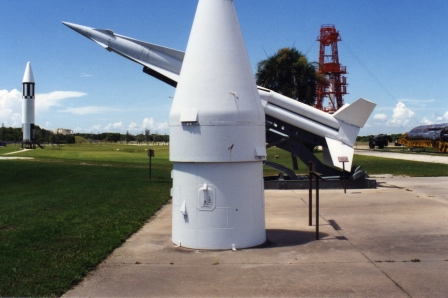
Overview
Display location:
Type: Satellite casing
Payload: Echo II communication satellite
Agency: U.S. Air Force
Contractor: Douglas Aircraft Company
History
Built by the Missile and Space Systems Division the Douglas Aircraft Company, shrouds like this one were used during the Big Shot-1 and Big Shot-2 suborbital inflation tests. Part of the National Aeronautics and Space Administration’s (NASA) project Echo, each Big Shot payload consisted of a 535-pound, 135-foot diameter aluminized plastic balloon.
Following ejection from the shroud at an altitude of about 250 miles, the balloon was inflated and began to rise before making a slow fall back toward Earth. Big Shot tests were designed to validate inflation methods for the proposed Echo passive communications satellites, which were to reflect radio signals across large expanses of ocean.
Launches
The Big Shot payload, enclosed within the shroud, was launched atop a Thor missile. Big Shot-1 was launched from Launch Complex 17 on 15 January 1962. Although all test objectives were met, the balloon was torn apart due to rapid inflation.
The launch of Big Shot-2, also from Launch Complex 17, took place on 18 July 1962 and was visible for about 10 minutes as it inflated and rose to an altitude of more than 900 miles. At the time, Big Shot-2 was the largest manmade object ever placed in space. Big Shot test paved the way for the successful deployment of the Echo II satellite on 25 January 1964.
This exhibit was provided to the museum by the Redistribution and Marketing Branch at Patrick Space Force Base, Florida in March 1968.